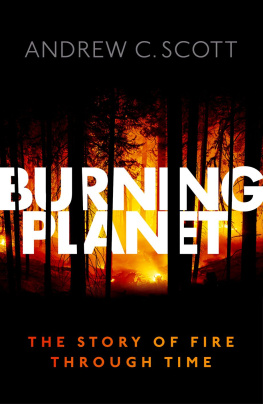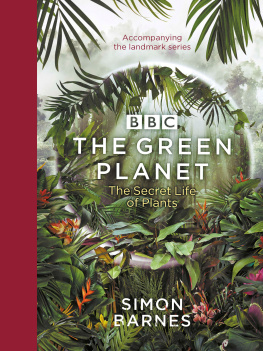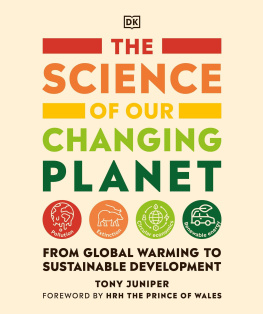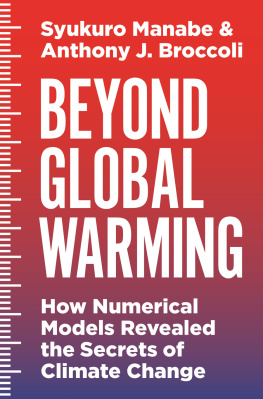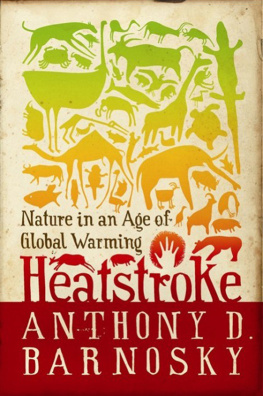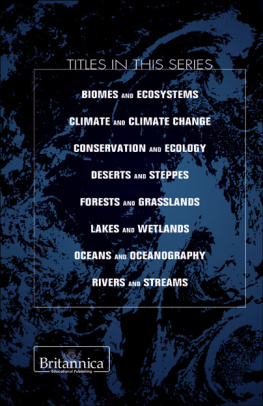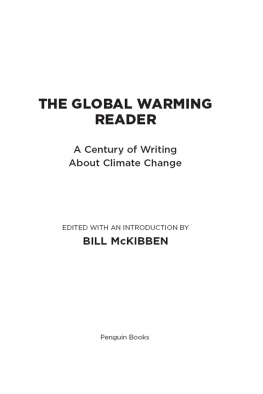The Emerald Planet
The Emerald Planet
How plants changed Earths history
David Beerling


Great Clarendon Street, Oxford OX 2 6 DP
Oxford University Press is a department of the University of Oxford.
It furthers the Universitys objective of excellence in research, scholarship,
and education by publishing worldwide in
Oxford New York
Auckland Cape Town Dar es Salaam Hong Kong Karachi
Kuala Lumpur Madrid Melbourne Mexico City Nairobi
New Delhi Shanghai Taipei Toronto
With offices in
Argentina Austria Brazil Chile Czech Republic France Greece
Guatemala Hungary Italy Japan Poland Portugal Singapore
South Korea Switzerland Thailand Turkey Ukraine Vietnam
Oxford is a registered trade mark of Oxford University Press
in the UK and in certain other countries
Published in the United States
by Oxford University Press Inc., New York
David Beerling 2007
The moral rights of the author have been asserted
Database right Oxford University Press (maker)
First published 2007
All rights reserved. No part of this publication may be reproduced,
stored in a retrieval system, or transmitted, in any form or by any means,
without the prior permission in writing of Oxford University Press,
or as expressly permitted by law, or under terms agreed with the appropriate
reprographics rights organization. Enquiries concerning reproduction
outside the scope of the above should be sent to the Rights Department,
Oxford University Press, at the address above
You must not circulate this book in any other binding or cover
and you must impose the same condition on any acquirer
British Library Cataloguing in Publication Data
Data available
Library of Congress Cataloging in Publication Data
Data available
Typeset by SPI Publisher Services, Pondicherry, India
Printed in Great Britain
on acid-free paper by
Clays Ltd, St Ives plc
ISBN 9780192806024
10 9 8 7 6 5 4 3 2 1
For Juliette
Preface
The great evolutionary biologist J.B.S. Haldane (18921964), on being asked by a cleric what biology could say about the Creator, entertainingly replied, Im really not sure, except that the Creator, if he exists, must have an inordinate fondness of beetles. Haldane was referring to the fact that approximately 400 000 species of beetles make up roughly 25% of all known animal species. Current estimates for the total number of species of flowering plants in the world (300 000400 000), had they been available to him at the time, may have given Haldane pause for thought about his riposte.
Plants and beetles may be tied, stem and thorax, in the global biodiversity stakes but when it comes to capturing our own fascination, plants are way ahead, clear winners in the popularity stakes. We have been collecting, classifying, and cultivating floras worldwide for centuries. Not only do plants provide us with fuel, food, shelter, and medicines that sustain the human way of life, but they also uplift and inspire us. Irrespective of the season, we flock to fine gardens, elegantly sculpted landscapes, botanical gardens, and arboretums to pay homage to the plants and trees.
But how many of us have stopped to wonder how remarkable plants are, how profoundly they have altered the history of life on Earth, and how critically they are involved in shaping its climate? Only now are we unlocking vital information about the history of the planet trapped within fossil plants. My aim in writing this book has been to provide a glimpse of these exciting new discoveries because they offer us a new way of looking and thinking about plant life. It recognizesindeed emphasizesthat plants are an active component of our planet, Earth. At the global scale, forests and grasslands regulate the cycling of carbon dioxide and water, influence the rate at which rocks erode, adjust the chemical composition of the atmosphere, and affect how the landscape absorbs or reflects sunlight. In this book, I reveal how plant activities like these have added up over the immensity of geological time to change the course of Earth history. Never mind the dinosaurs, here is a revisionist take on Earth history that puts plants centre stage.
My hope is that the book will further stimulate readers natural fascination with plantsboth the living and the long deadby revealing their activities in this new light. Each chapter leads the reader through a scientific detective story describing a puzzle from Earth history in which plants have played a starring role. Occasional linkages with themes from other chapters are pointed out as they arise. This format allows individual chapters to stand alone or be read in sequence. I provide a short summary at the start of each chapter to help readers quickly grasp the nature of the puzzle and glimpse the scientific excitement ahead. In writing a popular science book like this, it is true that, in Mark Twains words, I have got wholesale returns of conjecture out of... a trifling investment in fact. All sources of the facts taken from the published scientific literature are given in the notes, and where my ideas and conjecture are more speculative, I hope I have clearly signposted them as such. I have made every effort to keep the text free of scientific jargon, but admit that the odd word or term has proved indispensable. These are defined or explained where they occasionally crop up.

He had been eight years upon a project for extracting sunbeams out of cucumbers, which were to be put into vials hermetically sealed, and let out to warm the air in raw inclement summers.
Jonathan Swift (1726), Gullivers travels
Humankind continues to take liberties with our planet, although not of course in the gentle manner Jonathan Swift described in Gullivers travels. By consuming fossil fuels and destroying tropical rainforests, we are undertaking a global uncontrolled experiment guaranteed to alter the climate for future generations. Plants and vegetation are major actors in the environmental drama of global warming now as they have been in the recent and more distant past. This book focuses on the distant past, Earth history from millions of years ago. As we shall see, though, this investigation of the past has much to teach us about our present predicament. It offers us cautionary lessons about the current mismanagement of our planets resources we would be wise to heed.
July 2006, Sheffield
D.B.
Acknowledgements
This book had its genesis in discussions with colleagues over a beer in a sushi bar in San Francisco, in December 2002. San Francisco is home of the fall meeting of the American Geophysical Union, an annual gathering of several thousand scientists from a host of disciplines congregate for a science feast. At the 2002 meeting, I had the prospect of delivering a belated inaugural lecture the following spring hanging over me, and was searching for an effective way to present some of the findings of my research group over the past decade in an engaging way to a lay audience. One idea was to present them as a series of short stories, each beginning with a seemingly straightforward question, an approach used to good effect by Paul Colinvaux in his admirable 1980 book Why big fierce animals are rare (Penguin, London). The basic concept of individual stories, each with plants playing the starring role, worked well on the night, and I subsequently adopted tha format here, although in all but one case the inclusion of a question-in-the-title has been abandoned.


